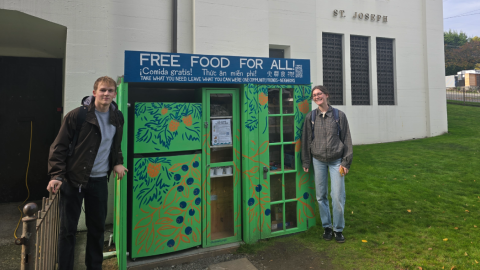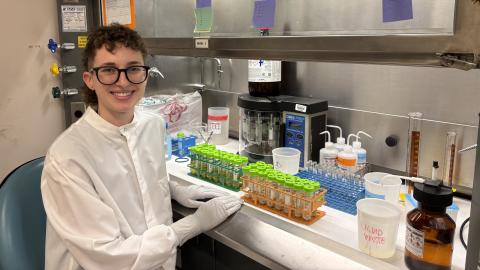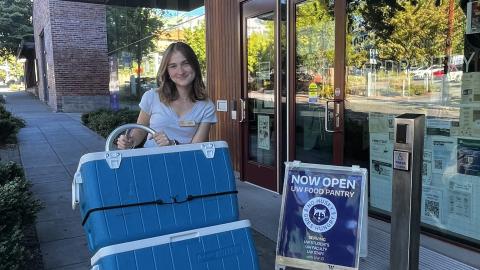In the U.S., we each waste about a pound of food each day. Our own choices contribute to the pileup, combined with a system that promotes wasteful decisions, according to a new report from UW Department of Environmental & Occupational Health Sciences (DEOHS) Associate Professor Jennifer Otten and collaborators.
The report, published Aug. 21 by the National Academies of Science, Engineering, and Medicine (NASEM), identifies key factors that drive consumer behavior — such as individual choices, food marketing, government policy and the media — and provides guidance on intervention strategies and national policy.
The report recommends creative approaches for reducing food waste, such as offering smaller carts in grocery stores to reduce overbuying; federal standardization of food date labeling; and a national campaign to provide tips to consumers and reach them during “teachable moments.”
One such moment is going on right now, as the COVID-19 pandemic continues to strain the U.S. economy and increase food insecurity, and as disruptions in the supply chain and closures of restaurants and other food businesses have increased waste.
Giving consumers better choices

NASEM assembled the Committee on a Systems Approach to Reducing Consumer Food Waste to conduct research and write the report, called A National Strategy to Reduce Food Waste at the Consumer Level. Otten, a core faculty member of the UW Nutritional Sciences Program, was a member of the committee.
“What is unique about this report is that it reviews and makes sense of the current evidence on the drivers of consumer food waste and assesses what interventions have worked or might work,” said Otten. “It was clear from the evidence that a multifaceted strategy with coordinated action from all actors in our food system is needed to give consumers better choices to prevent and reduce waste.”
Waste not, want not
To change consumer behavior, committee members proposed a strategy with three primary pathways:
• Changing the U.S. food environment to discourage waste by consumers;
• Strengthening consumers’ motivation, opportunity and ability to reduce food waste; and
• Applying research findings and technology to support consumers in food waste reduction.
This systems-based approach builds on existing efforts by various stakeholders and includes recommendations for partners whose participation is integral to a coordinated national effort to reduce food waste at the consumer level.
“Consumer food waste contributes to the depletion of natural resources, squander of labor, degradation of the environment and increasing costs to consumers,” Otten said. While some food waste is hard to avoid, “there are so many opportunities to help consumers do better,” she added.
This post is adapted from the full story, available here.




